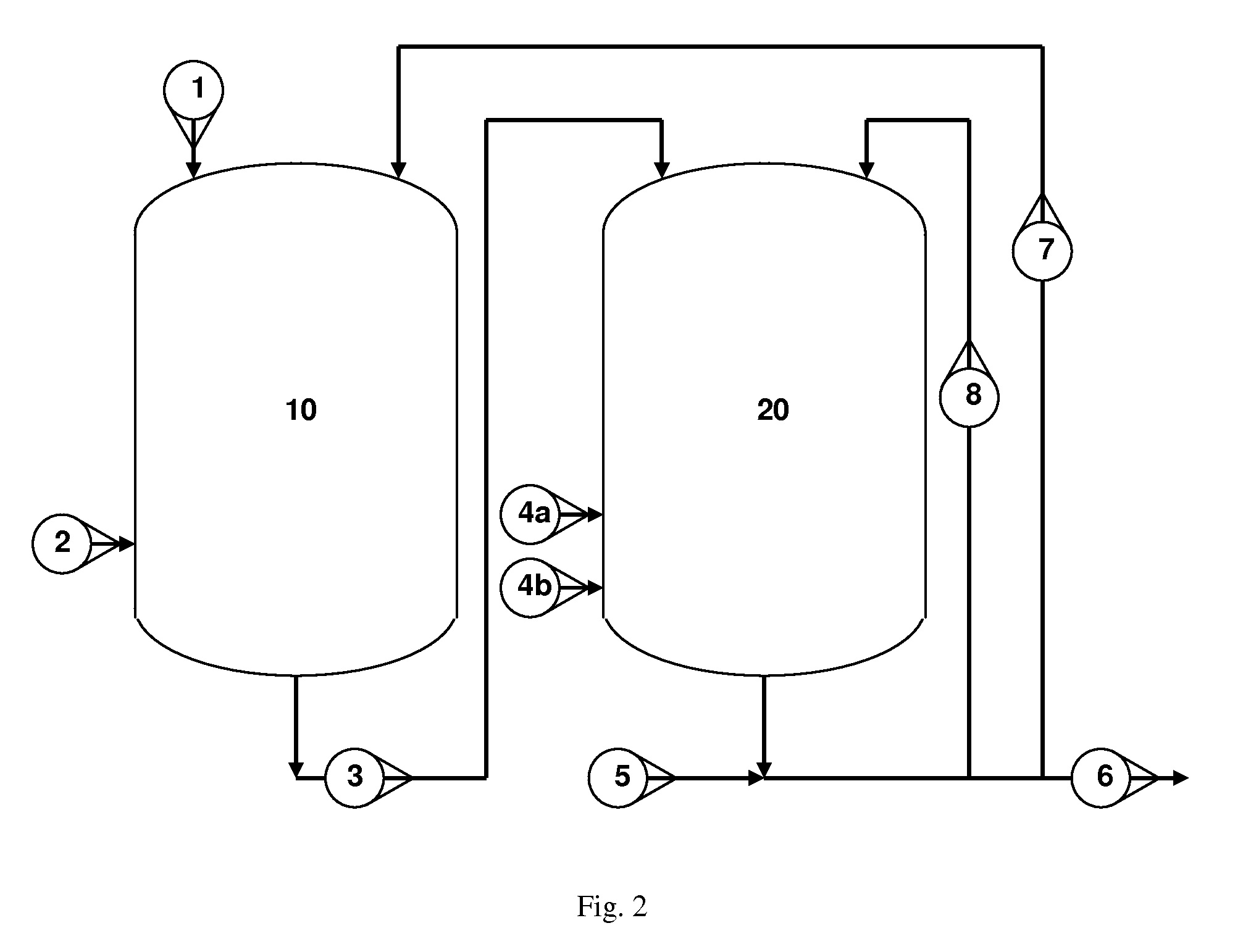U.S. Patent No. 10,123,538 B2 (‘538), issued on November 13, 2018, for “Glyphosate Salt Herbicidal Composition.” The inventors are David R. Eaton of Kirkwood, Missouri, Jeffrey A. Graham of Chesterfield, Missouri, and Henry Agbaje of Greensboro, North Carolina. The applicant and assignee is Monsanto Technology LLC of St. Louis, Missouri, the huge agro- biotech company focused on genetically-modified seeds and herbicides. The ‘538 specification describes new processes for preparing a aqueous glyphosate composition which is comprised of a mixture of potassium salts and propylammonium (IPA). The ‘538 claims are directed to the batchwise process for preparing a glyphosate salt solution comprising potassium (K) and IPA cations in a ratio of 50:50 to 90:10, and the continuous process for preparing the finished composition comprising K and IPA cations, also in a ratio of 50:50 to 90:10.
Figure 2 illustrates the continuous process as recited in the claims and specification.

The Cooperative Patent Classifications are A01N (preservation of bodies of humans or animals or plants or parts thereof; biocides, e.g., disinfectants, as pesticides or herbicides, namely pest repellants or attractants, characterized by their forms or their non-active ingredients or by their methods of application; containing organic phosphorus compounds, including containing acyclic or cycloaliphatic radicals; and containing organic oxygen or sulfuric compounds).
Glyphosate is the active ingredient in ROUNDUP®, the most widely used herbicide. Controversy has followed Roundup, and glyphosates in general, because of anecdotal evidence of a carcinogenicity linkage. (A trial dealing with Roundup’s causation of non-Hodgkin’s Lymphoma in one plaintiff has been discussed several times on this blog, here, here, here, and here.) Glyphosate research has been mixed, with the EPA finding no toxicokinetic evidence in glyphosates, while the International Agency for Research on Cancer (IARC), a WHO department, finding the opposite. The science community is also at-odds with the research, but many suggesting a non-carcinogenic link with glyphosates.[1] However, public opinion is decidedly against Monsanto; when Bayer acquired Monsanto last year, it had decided to eventually drop the Monsanto name, in part because of the controversy surrounding glyphosates and the public relations hit Monsanto has taken in recent years for its top revenue-generating herbicide product.
If you have any questions on the patenting process, please contact Yonaxis for more information.
[1] See J.V. Tarazona, D. Court-Marques, et al., Glyphosate toxicity and carcinogenicity: a review of the scientific basis of the European Union assessment and its differences with IARC, Arch. Toxicol. 91(8):2723-43 (2017) (pub’d online Apr. 3, 2017), doi: 10.1007/s00204-017-1962-5; but see K.Z. Guyton et al., Carcinogenicity of tetrachlorvinphos, parathion, malathion, diazinon, and glyphosate, Lancet Oncol. 16(5):490-91 (May 1, 2015) (pub’d online Mar. 20, 2015), doi:https://doi.org/10.1016/S1470-2045(15)70134-8 (finding limited carcinogenicity in humans and sufficient carcinogenicity in animals).
